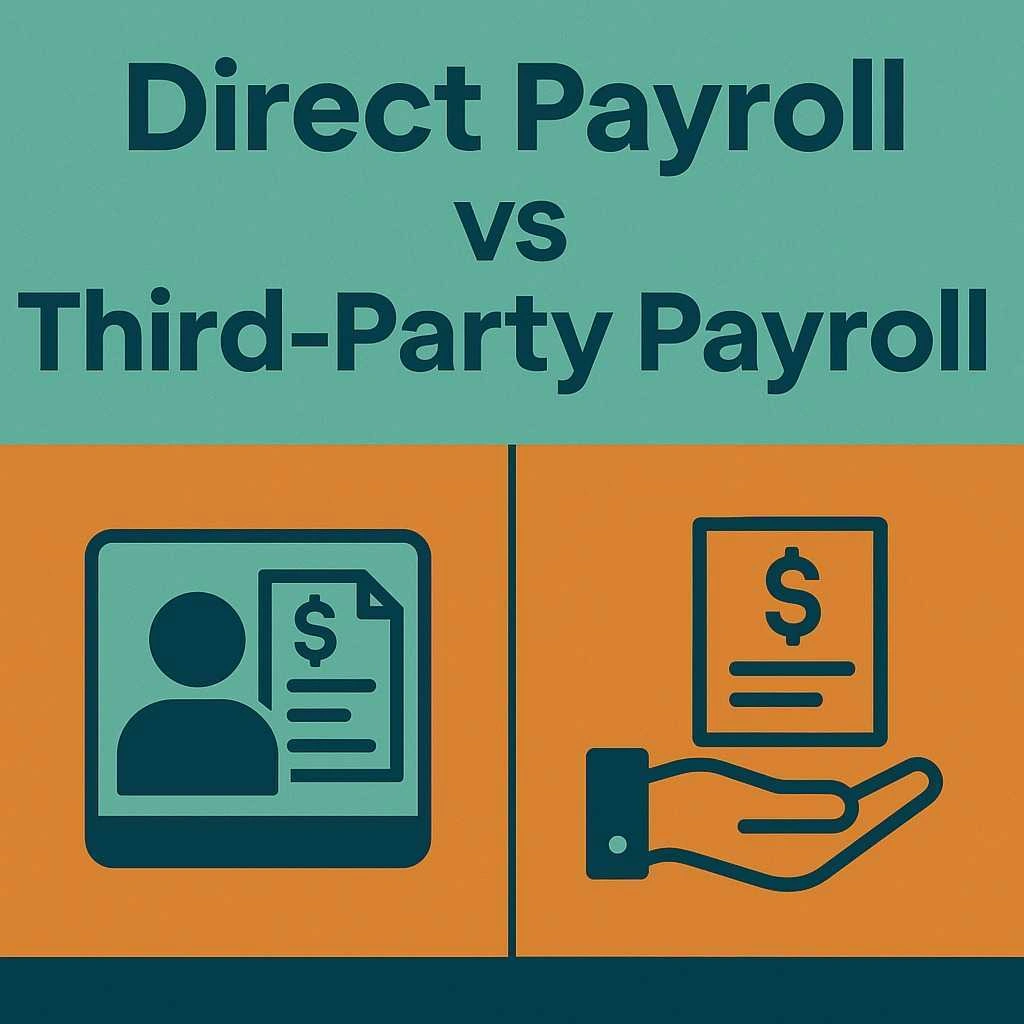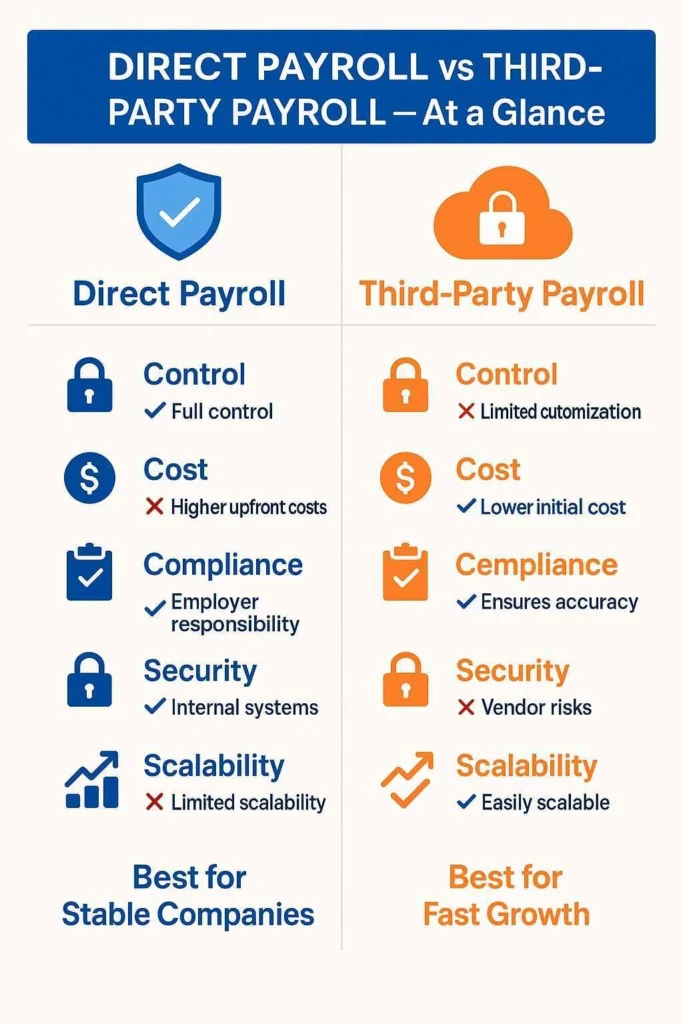For business owners and HR leaders, payroll isn’t just about paying employees—it affects compliance, data security, costs, scalability, and employee satisfaction. One of the most important decisions is whether to keep payroll in-house (direct payroll) or delegate it to a third-party provider.
This comparative analysis breaks down both models—highlighting advantages, disadvantages, and best-fit use cases—so you can make an informed decision that aligns with your business goals.
What Is Direct Payroll?
Direct payroll (in-house payroll) means your internal HR or finance team manages everything: wage calculations, tax deductions, filings, and payslips.
Key traits of direct payroll:
- Maximum control and customisation over salary structures, policies, and timing.
- Greater confidentiality since employee data remains within your organisation.
Higher operational responsibility—your team must stay updated on tax codes and compliance rules.

What Is Third-Party Payroll?
Third-party payroll outsourcing involves contracting an external provider to manage payroll processes end-to-end.
Key traits of third-party payroll:
- Scalability and speed—ideal for businesses with seasonal or rapid headcount growth.
- Compliance expertise—vendors stay updated on changing tax and labor laws.
- Vendor dependency—success depends on provider reliability, integration, and SLAs.
Direct Payroll vs Third-Party Payroll: A Side-by-Side Comparison
| Factor | Direct Payroll (In-House) | Third-Party Payroll (Outsourced) |
| Control & Transparency | Full control over data, instant issue resolution | Limited customisation, SLA-driven processes |
| Cost Structure | Higher upfront costs, potential long-term efficiency | Lower initial cost, but hidden fees are possible |
| Compliance | Full employer responsibility | Vendor ensures statutory accuracy |
| Data Security | Internal systems protect confidentiality | Strong vendor security, but external risks added |
| Scalability | Can strain without automation | Easily scales with provider systems |
| Employee Experience | Stronger cultural alignment, benefit integration | Risk of detachment from the employer brand |
Pros and Cons of Each Model
Direct Payroll
Pros:
- Maximum control and customisation
- Strong confidentiality
- Long-term cost efficiency with stable systems
Cons:
- Requires ongoing compliance expertise
- Higher staffing and software overheads
- Scalability challenges without automation
Third-Party Payroll
Pros:
- Saves HR time and resources
- Strong compliance and tax expertise
- Scales quickly across geographies
Cons:
- Less direct control over payroll data
- Hidden fees for extra services (off-cycle runs, custom reports)
- Integration and employee experience challenges
When to Choose Direct Payroll
Direct payroll is a better fit if your company:
- Operates in a sensitive industry where confidentiality and control are critical.
- Has a stable workforce size with mature HR systems.
- Prioritises employee experience and cultural alignment.
When to Choose Third-Party Payroll
Third-party payroll is the right choice if your company:
- Needs to scale rapidly across regions or seasonal workforce cycles.
- Lacks in-house expertise in compliance and payroll taxation.
- Wants to free HR teams from administrative tasks to focus on strategy.

Risk Mitigation Tips
For Direct Payroll:
- Invest in robust HRMS + payroll automation.
- Schedule regular compliance audits to reduce errors.
For Third-Party Payroll:
- Audit vendor fee schedules upfront to avoid hidden costs.
- Demand strong data security certifications.
- Define SLAs with KPIs for timeliness, accuracy, and employee satisfaction.
Conclusion
There is no universal winner in the direct payroll vs third-party payroll debate.
- Direct payroll is best for companies that value control, confidentiality, and cultural integration.
- Third-party payroll is ideal for organisations prioritising scalability, compliance, and administrative efficiency.
👉 The smartest businesses evaluate total cost of ownership, compliance risks, and employee experience before choosing—or even adopting a hybrid payroll model.


